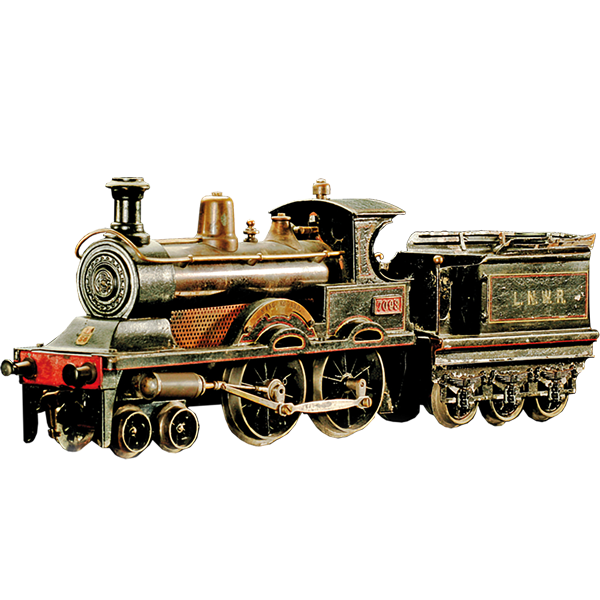
- DE
- EN
- FR


This model railway layout is a good example of the large layouts that especially wealthy families and aristocrats could afford. However, let's start with the glass shelf above, because here we see luxurious trains in large gauges, as the Bing company produced them mainly for wealthy English customers.
The magnificent black steam locomotive with the inscription "King Edward" alone made and still makes the hearts of railway fans beat faster. It has two fixed protected cylinders and can run both forwards and backwards. It also has a flame guard, nickel-plated flanged wheels and a brass dome. The steam is discharged through the chimney.
Next to this locomotive you will see probably the most impressive train in this museum. The traction engine is an express locomotive of axle sequence 2B1, also in gauge IV with 75mm track width. This wonderful real steam locomotive pulls the Orient Express, which in the model has almost as rich and luxurious equipment as the original.
This level of detail was usually reserved for wealthy customers. At trade fairs and exhibitions, Bing used such elaborate models to demonstrate its technical skills. Only a few of these extraordinary railways were actually produced, and even fewer are still preserved today and can be seen in exhibitions.
A richly equipped layout like this one also shows that a model railway was then, as now, a toy that was always being added to. It was usually added to at Christmas. For this purpose, Bing offered suitable supplementary sets so that the system toy remained interesting over a long period of time. This layout could have been created over a period of about 30 years, from 1900 to 1930.
In the foreground you can see a large city station from 1906, where a fully equipped Mitropa train is just stopping. While the sleeping car passengers are having breakfast, they get fresh bedding from the train crew.
In the depot, freight wagons are filled in a coaling station while the next locomotive is being prepared on a turntable. The plant is powered by a steam engine.
Around 1900, the large street lamps were still lit with 110 volts. Connecting them was therefore more the job of fathers and grandfathers. The electricity for this was partly taken from the ceiling lighting. Here, one or two plugs could often be connected, because sockets on every wall were not yet common at that time.
Would you like to drive one of these locomotives yourself? For 50 cents you can be a conductor - have fun!